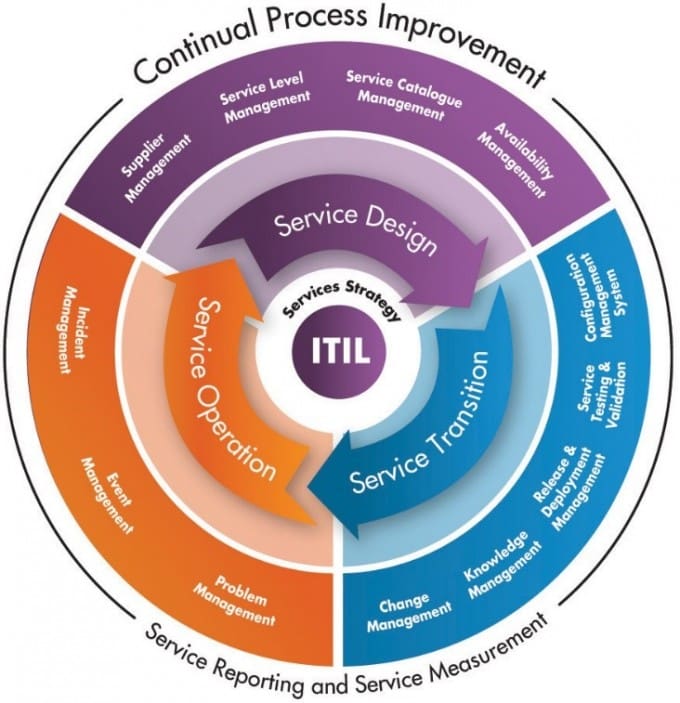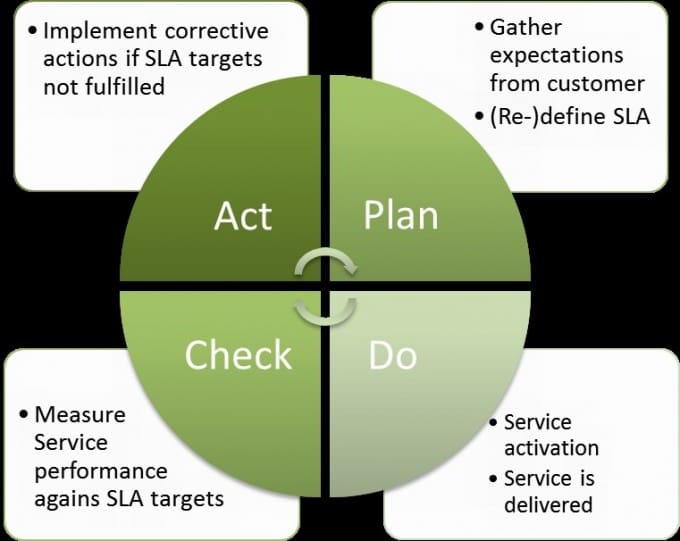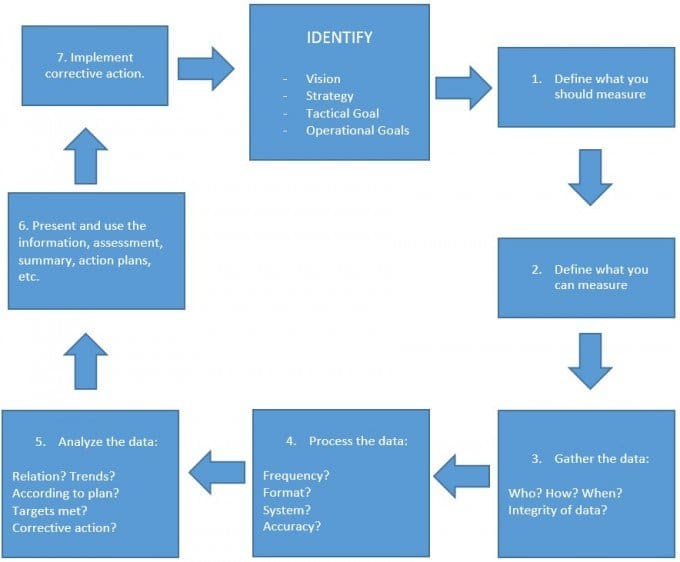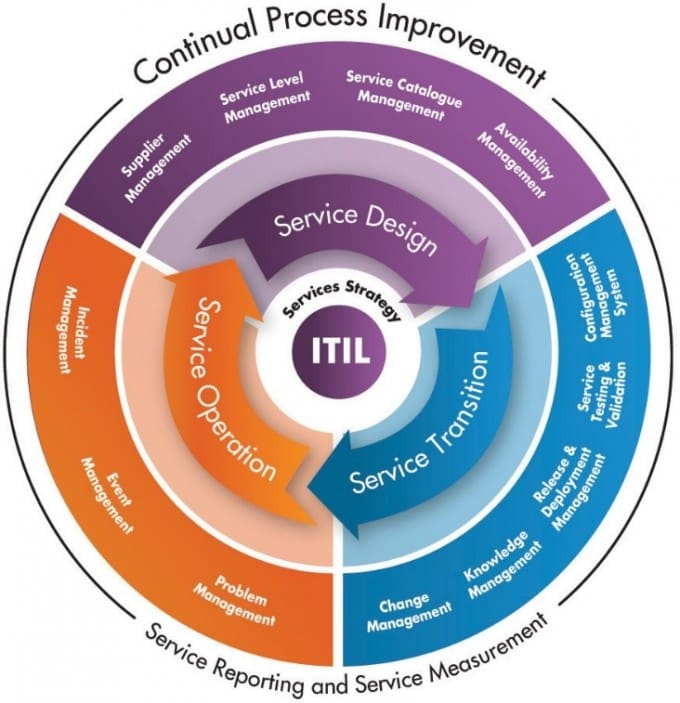An ITIL implementation in your organization can be confusing. This section explains exactly why we implement ITIL for our services and processes. In Continual Service Improvement (CSI), we have a couple of different models that we need to know – the Seven Step Continual Improvement Model and the Deming Model. Our ultimate goal is to continually improve our services. You may ask…why are we implementing ITIL? Why are we shooting for perfection?
Important keys to success for Continual Service Improvement:
You can’t measure what you can’t control
You can’t control what you can’t measure
You can’t measure what you can’t define
When we work backwards from the keys above, it makes perfect sense. We have to be able to define what it is we are trying to improve and why it needs to be measurable. Once we have it defined and measured, we need to control it.
If we go back to our diagram from my previous blog entry for ITIL Introduction, you will see that all of the other services are enveloped under CSI. The key to getting improvement in services, is to have a solid, comprehensive and very effective measurement process. Everything has to be measurable. You cannot measure what you cannot define…

t simply must be measurable:
- Constant Reviews
- Ongoing Audits
- Periodic Assessments
- Proposals
- Satisfaction Surveys
- Reviewing Trends
- Recognizing Changing Priorities
- Observing the Competition
- Conducting Service Reviews
If our task is to improve Service Operations, we would be asking questions such as: What is the vision or mission? Where are we not? Where do we want to go? How do we get there? Did we arrive? How do we persist and maintain our momentum? For those of you reading this and planning to take your ITIL Certification exam soon, you will be asked about these questions.
Let’s take a look at our first model. This model came around in 1950’s from W. Edwards Deming. This cycle model has been in ITIL since the beginning.

Deming’s cycle is a continuous process that looks for opportunities to improve. You can probably see it. Plan what you are going to do, do what you planned to do, check to see if you reached your goal, your desired outcome based on that goal and lastly, act to improve that plan before you act again. These are the bases for a lot of current standards used today, such as SIX SIGMA or TQM, which are used by large corporations.
The ITIL Exam also covers Deming’s Cycle, so it’s important to familiarize yourself with it.
Let’s take a look at the Seven Step Improvement Process Model. This is very important to memorize for the exam.

We start out with the Identification. Think of a process. It will always start with the identification of the process. We need to identify the vision, strategy, etc. It will be different for each corporation. Then we need to define what we will measure. This will allow us to perform GAP ANALYSIS. We will also want to define what we can actually measure. Once we have both definitions, we can move on to gathering our data. This will be a raw data. In Step 4, we will process the data. At this step, we are putting raw data into context. That leads to Step 5. Turning data into measurables. Step 6 – this is the step where we ask the question previously mentioned – HAVE WE ARRIVED? This is where reports come in and where our knowledge is presented in an official form. Finally Step 7 – also known as the improvement. The knowledge we have gained will help us to improve, optimize, to make corrections, to maximize our potentials. Wisdom is applied to our knowledge.
There should be a continual process improvement in every stage of the service.


